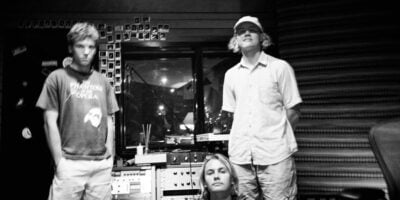The Australian Ballet’s Bodytorque is unique in the world of dance. It’s a showcase allowing dancers and emerging choreographers to try out all new ideas, and experiment with all new forms. Richard House, a 22-year-old Australian Ballet dancer, will make his choreographic debut at this year’s season, Bodytorque.Technique. House’s work is called Finding The Calm and attempts to merge the classical and contemporary styles that he has loved since his first days as a dancer. “I went through Victorian College of the Arts Secondary School,” he explains, “and we did the same number of ballet classes and contemporary ones. It was really interesting going from ballet, where the rules are set in stone, to contemporary, which is more creative and has a lot more room for improvisation.”
For House, this year’s theme ‘Technique’ represents the ideal opportunity to explore the merging of styles even further. “I thought about the kind of work I’d like to create,” he says, “and I decided I wanted to explore the idea of ballet technique in the 21st century, to create something new and fresh. It’s been really interesting, because I’m working with classically trained dancers, and so the lines they create are balletic, even though the movements in the piece are fluid and rounded. It’s all about breaking out from a classical ballet step into a contemporary step, and then bring it back again to something more classical, with the lines of the legs and the shapes that you can create. The challenge has been in making a distinct style.”
Finding The Calm engages with the idea of euphoria, and attempts to express happiness through movement. Dancers, he says, experience euphoria when their bodies move in tune with music – dance, therefore, is the ideal medium through which to explore such questions. “No matter who you are in life, your constant search is to find euphoria,” he says. “Everyone wants that ultimate high, even if you only get it for a second, a minute, an hour … I wanted to create a piece that shows the search.” The work has been choreographed for four dancers – it’s abstract rather than narrative, and is therefore open to any sort of interpretation. “There’s no wrong way to view my piece,” House says, “you can see whatever story you want. I just want to evoke a sense of searching for happiness.”
To accompany the work, House has chosen a piece by Gabriel Fauré, and a piano and cello work by Johann Christian Bach. “I feel there’s a lot of common ground between the Bach piece and my style of choreography,” he explains. “The piano dictates the technical side of things, it keeps the tempo, and the cello represents the fluidity, and brings the piece into harmony. I really wanted music that had that sort of structure.”
On a personal level for House, participating in Bodytorque.Technique has been a learning experience, an opportunity to step outside his usual role in the Australian Ballet. “It’s been an interesting experience,” he laughs, “one minute I’m dancing alongside my friends on stage and the next you’re telling them what to do. I’m one of the youngest people choreographing the Bodytorque.Technique season, so it feels a bit daunting working with some of the older dancers. It’s been good, though. Bodytoque.Technique will be my debut into the world of professional choreography – it means getting my name out there in a professional way. It’s a big thing to be able to start with this company of dancers. I’m really excited, and it’s hopefully the first of many.”
BY ALASDAIR DUNCAN
Bodytorque.Techniqueis presenting atSydney Theatrefrom Thursday October 31 through Sunday November 3.

































